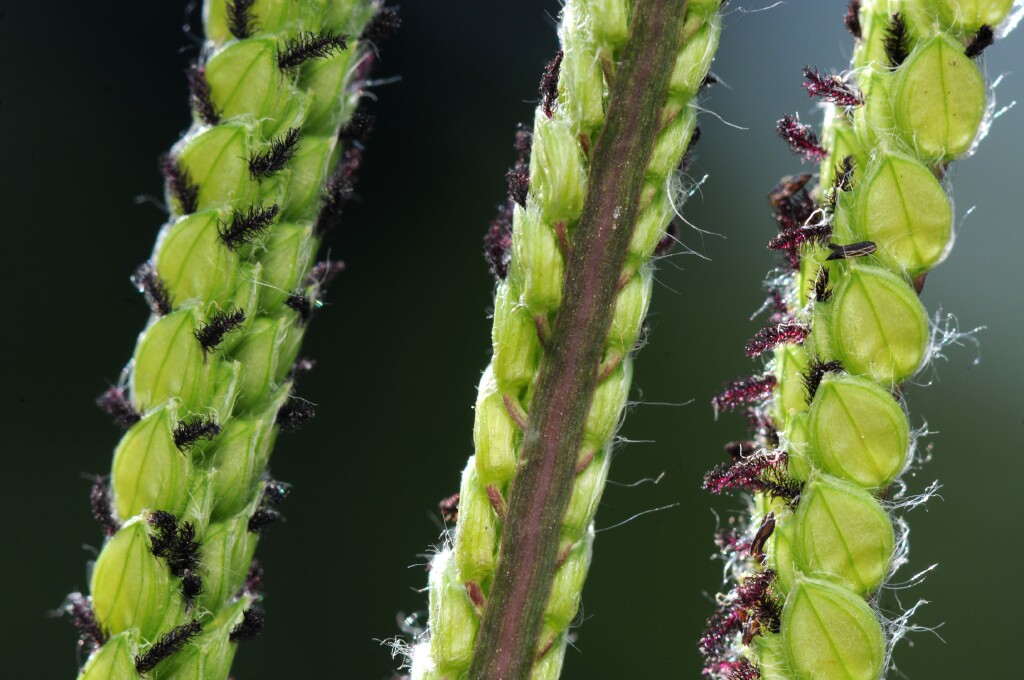Paspalum dilatatum
Poir. PaspalumTufted rhizomatous perennial. Culms decumbent to erect, to c. 1 m high; nodes glabrous. Leaf-blades flat, to 20 cm long and 15 mm wide, glabrous and virtually smooth; sheaths of lower leaves hairy, those of upper leaves glabrous; ligules papery, obtuse, 2–8 mm long, usually with a few associated hairs. Panicle 3–20 cm long, of 2–10 semi-erect to spreading or pendulous racemes to 12 cm long. Spikelets green or purplish, ovate, acute, 2.7–3.9 mm long, paired, in four rows; lower glume not developed; upper glume 5–9-nerved, as long as spikelet, ciliate along the margin, sparsely hairy on the body; lower lemma 3–7-nerved, equal to upper glume, with ciliate margin, glabrous or subglabrous on the body; fertile lemma obtuse, slightly shorter than spikelet, slightly rounded dorsally, firm, pale, very finely striate Flowers Dec.–Jul.
LoM, MuM, Wim, GleP, Brid, VVP, VRiv, RobP, MuF, GipP, OtP, WaP, Gold, CVU, GGr, DunT, NIS, EGL, EGU, WPro, HSF, HNF, OtR, Strz, MonT, VAlp. Naturalized in all States except NT, also in many temperate and tropical countries. Native to Argentina. Recognized as a valuable fodder grass, but often a weed in lawns, ditches and other low-lying areas.
Frequently infected with a fungus causing a sticky secretion which may be toxic to stock and cause dermatitis in humans.
Walsh, N.G. (1994). Poaceae. In: Walsh, N.G.; Entwisle, T.J., Flora of Victoria Vol. 2, Ferns and Allied Plants, Conifers and Monocotyledons, pp. 356–627. Inkata Press, Melbourne.
 Spinning
Spinning



